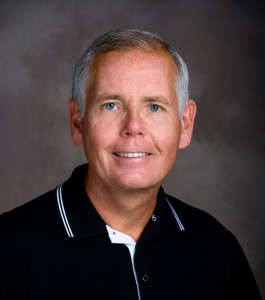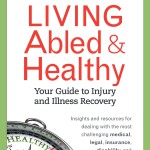I am a bit upset and depressed because I just learned my life expectancy is 101 — according to the electronic calculator that analyzed my answers on the Health Age Questionnaire. I found it on the website of the American College of Lifestyle Medicine. It seems like a good organization aimed mostly at doctors who prevent chronic disease by prescribing and teaching healthy lifestyles. However, they had better come up with a better argument for lifestyle change than this: “Wow, if you do everything we recommend, you get to live until you’re entirely useless, helpless, and bored out of your mind.”
After I got the 101 prediction, I redid the questionnaire, this time shading several answers to the “sad” side instead of the “happy” side — and the darned thing STILL says I’m going to live to 94. Phooey! Who the heck WANTS to live that long? NOT ME! I can clearly imagine my quality of life is likely to be by then. By the time Americans get over the age of 90-something, the VAST majority are demented, frail, and unable to live independently — and I might add have become totally irrelevant in the eyes of the rest of American society, with a status more similar to pets or babies than adults.
That was my dad’s fate. He died just a few days before he turned 89 — after refusing medical care for a heart attack because he had been WAITING for a way to die. Before that day, his medical problems were basically age-related degeneration.
A Harvard College, Harvard Medical School grad, former Director of one of the National Institutes of Health, my dad re-invented himself and his career at least three times. Originally trained as a pediatrician, he spent most of his career focused on child and maternal health, family planning, and other services to facilitate optimal development and health of the population. At about age 50, he left the pressure of Washington DC, gave up on a difficult marriage to my mother, and moved to the Eastern Shore of Maryland. He became a county health officer, developed a wide circle of friends and got involved in community affairs. He was always a kind, optimistic, creative, and positive person, even though he didn’t have much of a sense of humor. But his fun-loving second wife put him up to a lot of innocent mischief. We have a photo of him in Florida wearing a lei on his head, a bra made of coconut shells and a hula skirt — and a HUGE SMILE (while stone sober, I may add).
Around about age 80 he “retired” from medicine. And then, with some partners, he started a Sylvan Learning Center franchise and founded the Delmarva Education Foundation. He was still in there pitching, though clearly slowing down.
Shirley, his beloved second wife died in May of 2006, the year he turned 84. A few days after that, he commented to me “I’ll never be the center of anyone’s life ever again.” His zest for life was gone because she was. She had cherished him and nurtured him — and vice versa. He was lonely, sad after that, and grew increasingly bitter. He had zero interest in finding a new companion or keeping up his social life. Treatment for “depression” had no effect. My sister who lived nearby did yeoman work to be family and provide companionship to him — and do the practical work required to keep him in the housing complex for independent elders where he lives. By the time she gave up and moved him to assisted living, there were FOUR part-time workers supporting him — plus her. However, Daddy was right, of course — he never was the center of anyone’s life again.
He had already given me his healthcare power of attorney. We had explicitly discussed his wish that I protect him from “the medical juggernaut” in case he was unable to do it himself. He also did done some exploring of ways to exit gracefully. I sent him an article from the New England Journal about what dying is like for patients with terminal conditions who refuse food and drink as they near the end of life. But when my dad in Maryland discussed this with his psychologist, the psychologist pronounced the method both a sin and against the law — so Daddy resigned himself to sticking around. In February of 2008, almost two years after Shirley’s death, Daddy (who could no longer write because of a worsening tremor) dictated this to his psychologist:
Because of my many disabilities – vision, hearing, etc. – I am happy to take advantage of the first opportunity that the Lord provides to join my wife Shirley in heaven. My daughter Jennifer holds the medical power of attorney for me. As a physician, she has the knowledge to determine what conditions are most likely to result in death, or result in disability that I would have to live with. In the former case, I would like medical care withheld if my condition would ordinarily result in death, and would like for hospice to provide palliative care. In the latter case, I will just ‘grin and bear it’. I have made peace with the Lord in this decision, and ask that all my children support the decision that I have made.
As he neared 90, the burdens of age had became even heavier. He still had no “terminal” conditions other than age. He was deaf, could no longer read or see the computer screen due to macular degeneration, had a tremor, chronic pain due to joint degeneration, and was very weak. He had lost all of his curiosity and most of his mental power. At one point, he was on 14 different medications, most of them with no discernible effect. I asked his doctors to stop as many as possible because nothing could reverse the progress of aging.
In the end, Daddy handled his exit firmly and gracefully, by himself, when he developed severe chest pain. He obviously recognized it for what it was — a potential way out. He told the ER doctor: “I’m just here to check and make sure it IS a heart attack. If so, all I want is morphine, no treatment.” The ER doctor, luckily, had her wits about her and suggested hospice. He immediately said yes. He lived less than a month — long enough to have one last Christmas Dinner with his kids and grandkids. Then he let go and left this earth.
More than twenty years earlier, Daddy and I had completed a multi-scenario medical decision-making worksheet. It was designed to make us think about and decide what we wanted our caregivers to do in various medical scenarios if we became unable to express our wishes. Surprisingly, that conversation wasn’t a downer at all. In fact it was the best conversation I think I EVER had with him because we talked frankly and intimately about what made life worth living for each of us personally — and when it wouldn’t be worth continuing. At the time, he said he wanted to be kept alive until he couldn’t enjoy the day anymore. Yet as things turned out, he was forced to live four years after he had stopped being able to enjoy the day. .
We humans have invented ways that are KEEPING people alive longer, but we haven’t yet invented ways to safely and humanely allow those who HAVE BEEN kept alive past the time when they find quality of life tolerable to say they have “had enough, thank you” and move on to the next realm.
I don’t want to share my Dad’s fate. The idea of being sidelined, trying to think up “ways to pass the time” because I’ve become too deaf and blind to read or interact with others or do anything useful, beset with the chronic aches and pains of aging bones and joints makes me feel YUCK, or more accurately, DREAD.
Even if I were a “hale and hearty” 90 year old, I can’t think of a PURPOSE that I personally would find exciting enough to make life worth living when I’ve been alive that long. “Smelling the roses” doesn’t do it for me — because I am already starting to feel like I’ve had my fill of a lot of things. Been there, done that. Been THERE and done THAT, too.
For the foreseeable future, my current purpose for living are these:
1) Devote my energy and talents to leaving the campground of life better than I found it.
2) Enjoy everyday life with my husband, family, and friends — and the outdoor world.
3) Seek beauty and truth, especially in music, opera, theatre, dance, the visual arts, and spiritual practice.
4) Grow in wisdom and kindness. A VERY COOL thing is that personal growth & development in these two areas are available to all ages, including the very old (ahem, until dementia sets in).
What does this mean for you — if anything? Maybe you could think about what makes life worth living for you. It will make you feel STRONG and GOOD to do it. Fill out a Five Wishes living will from Aging with Dignity that gives your caregivers instructions for how to care for you in case you can’t tell them yourself at a critical moment. And, do think about what you want the quality of your life to be like and how long you DO want to live. Do YOU really WANT to live to 101 or to 120? Why? What FOR?
Like this:
Like Loading...

